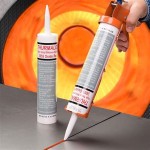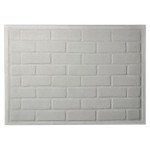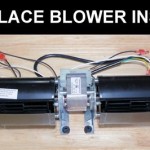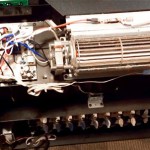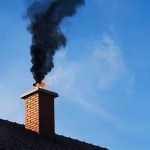How To Remove a Brick Fireplace: A Comprehensive Guide
Removing a brick fireplace is a significant undertaking, generally involving demolition, structural considerations, and careful adherence to safety protocols. This article provides a detailed guide to the process, outlining the necessary tools, safety measures, and step-by-step instructions for safely and effectively removing a brick fireplace. It is crucial to assess your skill level and comfort level with demolition work before beginning. If there is any doubt, engaging a qualified professional is strongly recommended.
Before commencing any work, a thorough assessment of the fireplace and surrounding structure is paramount. This assessment should include identifying the fireplace's construction method, determining its load-bearing status, and inspecting for any concealed utilities such as gas lines or electrical wiring. Understanding these factors will directly influence the removal strategy and ensure the safety of the demolition process.
Prior to any physical demolition, securing all necessary permits is essential. Local building codes and regulations often require permits for structural alterations, including fireplace removal. Contacting your local building department will provide clarity on permit requirements and ensure compliance with all applicable regulations, avoiding potential fines or legal complications down the line. Failure to obtain necessary permits can also affect future property sales.
Safety is the foremost consideration throughout the entire fireplace removal process. The demolition of brick and mortar generates significant dust and debris, posing respiratory hazards. Similarly, handling heavy materials presents risks of injury. Therefore, the consistent use of appropriate personal protective equipment (PPE) is non-negotiable.
Essential PPE includes, but is not limited to, the following: safety glasses with side shields to protect eyes from flying debris; a NIOSH-approved respirator or dust mask to prevent inhalation of harmful dust particles; heavy-duty work gloves to protect hands from sharp edges and rough surfaces; and sturdy work boots with ankle support to protect feet from falling objects and provide stability on uneven surfaces. Ear protection is also recommended due to the loud noises generated during demolition.
Clear the immediate work area of all furniture, rugs, and other valuables. Cover any remaining surfaces with heavy-duty plastic sheeting to protect them from dust and debris. The more thorough the preparation, the easier the cleanup process will be. Establishing a clearly defined and protected work zone minimizes the risk of damage to surrounding areas.
Key Point 1: Disconnecting Utilities and Checking for Hazards
Before any demolition whatsoever, the fireplace must be completely disconnected from any utilities. This is a critical safety step that should not be overlooked. If the fireplace has a gas line, it must be shut off and capped by a qualified professional. Similarly, if there are any electrical connections, they must be de-energized and properly disconnected by a licensed electrician. Ignoring these steps can lead to dangerous gas leaks or electrical shocks.
Check for any asbestos-containing materials. Older fireplaces, particularly those built before the 1980s, may contain asbestos in the mortar, firebrick, or insulation. Asbestos is a known carcinogen, and disturbing it can release harmful fibers into the air. If there is any suspicion of asbestos, have the materials tested by a qualified asbestos abatement professional. If asbestos is present, professional abatement is legally required.
Carefully inspect the chimney for structural integrity. A damaged or unstable chimney can pose a significant safety hazard during the removal process. If the chimney is in poor condition, it may need to be reinforced or partially dismantled before proceeding with the fireplace removal. Consult with a structural engineer to assess the chimney's condition and determine the best course of action.
Key Point 2: Demolishing the Fireplace: A Layered Approach
The demolition process should proceed in a controlled and methodical manner, typically starting from the top and working downwards. Avoid using excessive force, as this can destabilize the structure and increase the risk of injury. Instead, use a combination of hand tools and power tools to carefully dismantle the fireplace, brick by brick.
Begin by removing any decorative elements, such as mantels, surrounds, or facing materials. These are often attached with screws or nails and can be easily removed with a screwdriver or pry bar. Take care not to damage these elements if you intend to reuse them.
Next, start removing the brickwork. Use a cold chisel and hammer to carefully chip away the mortar around the bricks. Once the mortar is sufficiently weakened, the bricks can be pried loose with a brick hammer or pry bar. Work slowly and deliberately, and avoid using excessive force. A reciprocating saw with a masonry blade can also be used to cut through the mortar, but this method generates a significant amount of dust and requires appropriate dust control measures.
As the bricks are removed, carefully stack them in a designated area. Be mindful of the weight of the bricks and avoid creating unstable stacks. Consider using a wheelbarrow or other transport device to move the bricks to a disposal area. Properly disposing of the brick rubble is crucial. Check with your local waste management provider for regulations on masonry disposal.
As you work your way down, be mindful of any structural supports or framing that may be concealed behind the brickwork. These supports may need to be reinforced or removed as part of the demolition process. Consult with a structural engineer if you are unsure about the structural implications of removing any supports. It's important to understand how the fireplace is tied into the existing structure of the house to avoid compromising the integrity of the building.
Key Point 3: Addressing the Hearth and Foundation
The hearth, the area directly in front of the fireplace opening, is typically constructed of brick, stone, or concrete. Removing the hearth may require more force than removing the brickwork, as it is often more securely attached to the floor. Use a sledgehammer and chisel to break up the hearth into manageable pieces. A demolition hammer can also be used for this task, but it generates significant vibration and noise.
After removing the hearth, inspect the foundation beneath it. The foundation may be a concrete slab or a brick or stone footing. Depending on the design, the foundation may need to be removed or modified to accommodate the new floor covering or structural modifications. If the foundation is a concrete slab, a jackhammer may be required to break it up. If the foundation is a brick or stone footing, it can be removed using a cold chisel and hammer.
Once the fireplace and its components are removed, clean up the work area thoroughly. Sweep up all debris, and use a shop vacuum with a HEPA filter to remove any remaining dust. Dispose of all waste materials properly, following local regulations. Inspect the surrounding walls and floors for any damage, and repair as necessary. This may involve patching holes, repairing drywall, or refinishing flooring.
After the fireplace has been removed, consider the structural integrity of the surrounding area. The fireplace may have provided structural support to the wall or ceiling. Consult with a structural engineer to determine if any additional support is needed. Adding a beam or column may be necessary to ensure the stability of the structure. Leaving this unaddressed could cause settling, cracks, or even structural failure over time.
Finally, after the structural aspects are addressed, the aesthetic restoration can begin. This involves repairing any damage to the surrounding walls, floors, and ceilings. Patching holes, repairing drywall, painting, and refinishing flooring may be necessary to restore the area to its original condition. This phase also allows for incorporation of any desired design changes in the newly freed space.
Removing a brick fireplace is a complex project that requires careful planning, preparation, and execution. By following the steps outlined in this guide and prioritizing safety throughout the process, the successful and safe removal of a brick fireplace is achievable. Again, if the task seems daunting, engaging qualified professionals is the most prudent approach.

Removing A Brick Fireplace

How To Remove Brick The Easy Way Project Allen Designs

Simple Ways To Remove A Brick Fireplace With S Wikihow

Removing Fireplace S Brick Facade Not So Hard
How To Remove My Too Big Hearth Help Com Forums Home

Latest Diy Project Fireplace Chimney Removal For A Nicer Living Room Jeff Geerling

Simple Ways To Remove A Brick Fireplace With S Wikihow

Fireplace Demolition Day The Handyman S Daughter

Fist Step Was To Remove The Brick Face And Raised Hearth A 2 Cold Chisel 3lb Sledge Easily Separated Fireplace Remodel Family Room Makeover

Episode 32 Family Room Brick Fireplace Demolition Part 1
Related Posts

